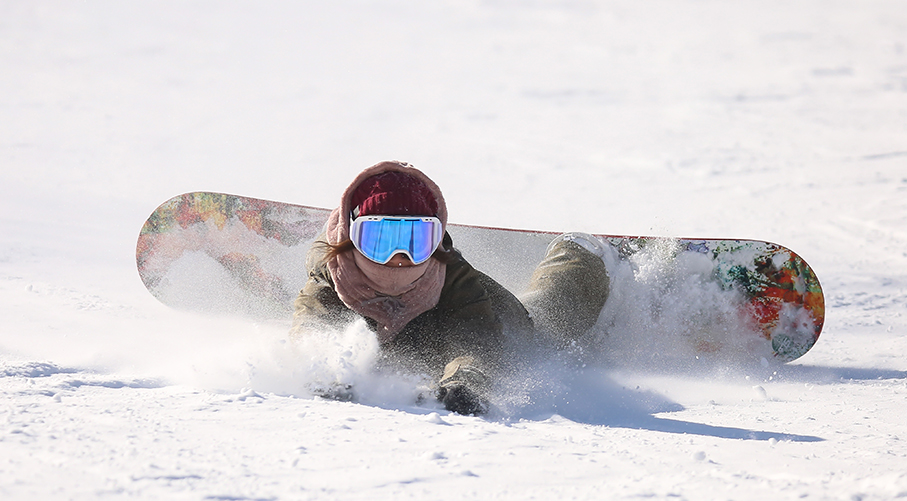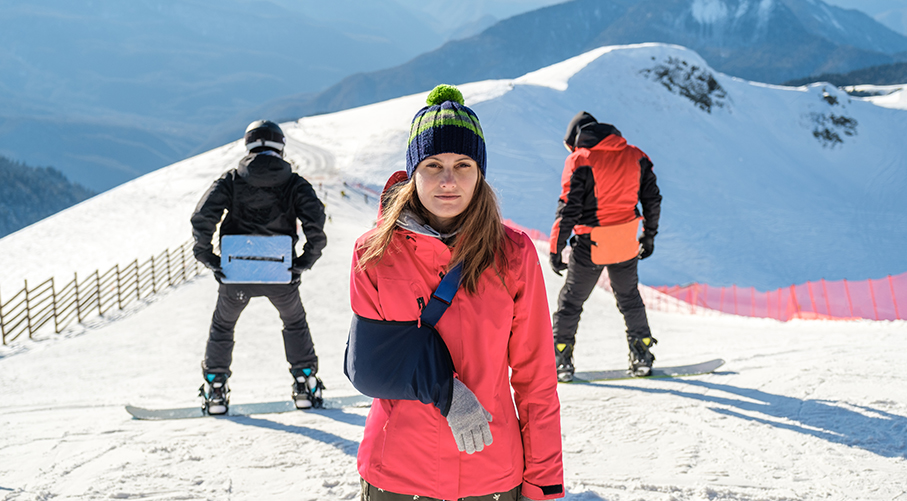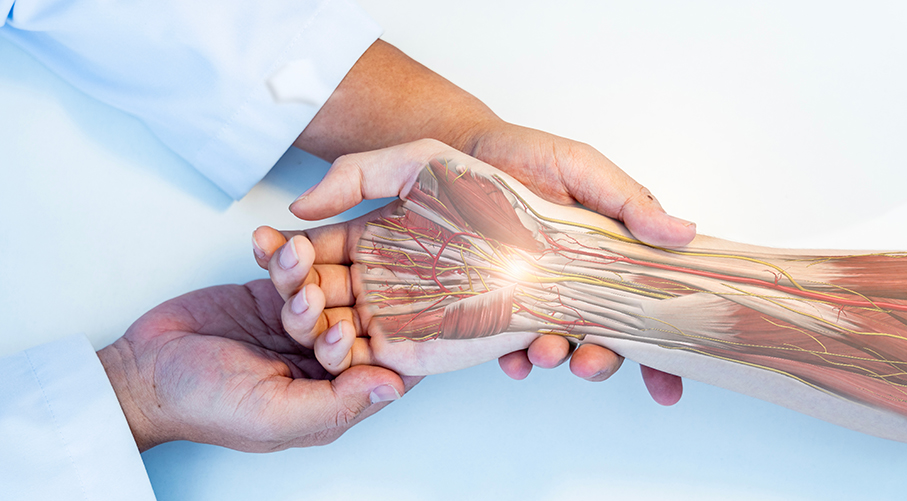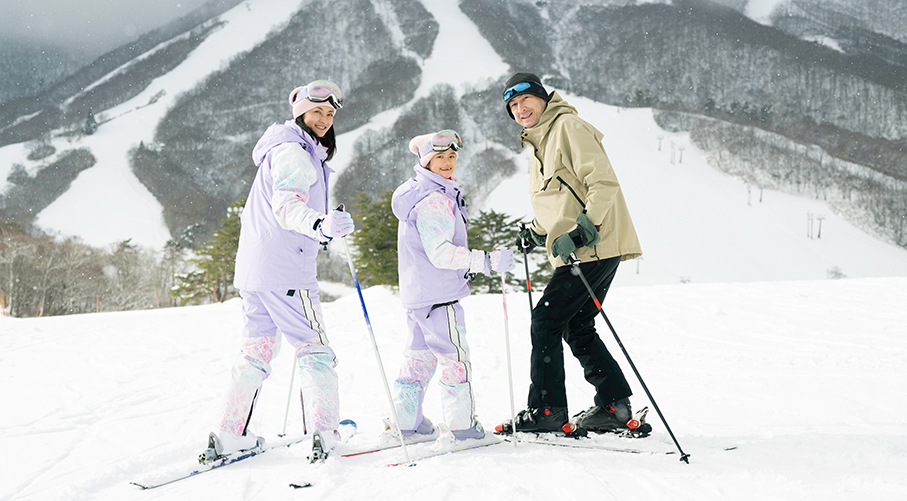Arguably, the most enjoyable winter activities include fresh snow, sunshine, and high speeds. Avoiding harm, including hand-related ski and snowboard injuries, will help to make the most of the exciting winter season.
Not surprisingly, engaging in adrenaline-inducing downhill winter sports attract some risks. Fortunately, there are many ways to prevent and treat potential hand injuries.

Article Summary
Common hand-related ski and snowboard injuries and how to prevent them.
Shortly, we will dedicate an article to Skier’s Thumb, being one of the most common ski-related hand injuries. Here we will discuss prevention and treatment of other common hand injury risks endured during winter sport activities. Risk of fracture, sprain, dislocation, and Triangular Fibrocartilage Complex (TFCC) injury while skiing and snowboarding are common due to falling onto outstretched hands.

Overview
The Risk to Hand Structures from Downhill Winter Sports
For the adrenaline-seeking winter sport enthusiasts, high-speed downhill skiing and snowboarding can range from tempting to nearly addictive. Due to the nature of these sports, collisions and high-impact falls can result in injury and damage to our complex and delicate hand structures. Even for the most experienced skiers and snowboarders, falling onto awkwardly outstretched arms and hands can be nearly unavoidable.
Common Symptoms of Ski and Snowboard Hand and Wrist Injuries
While it will take the discerning and practiced techniques of medical practitioners or hand specialists, like those at CHARMS, hand injuries sustained during skiing and snowboarding will have several common symptoms. Pain, swelling, and bruising is likely to occur with fractures, sprains, and dislocations as well as with TFCC injury. Importantly, because of the cold and exciting nature of downhill winter sports, a pain response may be delayed. For this reason, it is valuable to self-assess after a fall or collision. A fracture may be accompanied by a cracking noise and a sprain or dislocation may cause weakness and loss of stability. In the case of a TFCC injury, the wrist area between the carpal bones, the radius, and the ulna, symptoms may include ulnar-sided wrist pain as well as swelling, weakness, and limited motion.
Treatment Options and Outcomes
Each type of injury requires thoughtful diagnosis and a corresponding treatment plan. A fracture, for example, may require immobilization, a cast, or even surgery. Sprains and dislocations may similarly require immobilization, physical therapy, rehabilitation, or an operative intervention. Utilizing the specialised services offered at CHARMS elevates recovery and the potential of regaining full hand function.

Types of Ski and Snowboard Hand and Wrist Injuries
Fractures
With 27 bones in each hand, our hands’ complex anatomy offers many places for a possible fracture. Our instinctive nature to brace ourselves and land on our hands during a crash or fall while skiing or snowboarding adds to the likelihood of this type of injury. The radius and ulna, our two forearm bones that extend into the wrist, and our eight carpal bones of the wrist are at risk from a high-impact fall. So too are the metacarpals or hand bones as well as the many small bones, phalanges, of our fingers. Fractures may have further complications. For example, if a bone penetrates through the skin or if there is consequential damage to nerves or blood vessels in the hands.
Ligament Strains and Tears
A sprain, generally an overstretching or tearing of a ligament is another common injury sustained while skiing or snowboarding. A fully torn ligament will have symptoms of loss of stability along with extreme pain and swelling. This will require surgery to repair. Any joint is vulnerable to being overstretched. In mild cases, (RICE) rest, ice, compression, and elevation may be an effective treatment. However, it is not always obvious if an injury is a sprain or a fracture. It is important the injury be evaluated by a medical professional or the Surgical Hand Specialists at CHARMS to ensure the most accurate diagnosis.
Dislocations
Tending to be very painful, a dislocation is the abnormal separation in a joint. Often, upper extremity dislocations are in the wrist, elbow, or shoulder. For skiers and snowboarders, dislocations and fracture dislocations of the carpal bones of the wrist, while not too common, require immediate medical attention. A dislocated joint will appear visibly deformed or swollen and may be immovable. For a wrist dislocation, the standard of care is most often operative intervention.
TFCC Injury
Aiding wrist movement and stabilizing the forearm bones, the TFCC is the area between your radius and ulna. Consisting of cartilage, tendons, and ligaments, the TFCC also serves as a cushion between the distal end of the ulna and the small bones of the wrist. While chronic inflammation and age-related degeneration account for some TFCC injury, traumatic injury occur often through sports. Falling on an outstretched hand, as skiers and snowboarders are known to do, is a common cause of a traumatic TFCC injury. Also, a blow to the wrist or extreme arm rotation can result in a TFCC injury.

Prevention and Protection
Using techniques to prevent hand injuries while skiing and snowboarding will help make the most of the winter season. Before getting out in the winter, it goes a long way to stay in shape. Doing strengthening and balancing exercises may help minimize falls during high speed, adrenaline-seeking winter sports. Similarly, warming up and stretching, especially when it’s cold outside, will help to protect against injury. Skiing and snowboarding activities take place on a myriad of different steepness and terrains. Keep to terrain that matches your skill level and ski and snowboard abilities and stay in control of your speed as much as possible.
Knowing where and how to access help while skiing and snowboarding by being aware of ski patrol is a great way to protect yourself and others if you are injured. As with many high-speed sports, there is plenty of protective equipment to choose from. Wear protective gear such as wrist guards to help protect delicate hand structures. Easier said than done, when you fall, try to let go of ski poles as falling while gripping ski poles may contribute to potential hand injury.
When to Seek Medical Assessment
Seek medical attention if you have injured your fingers, hands, or wrists during your favourite winter activities and symptoms have not improved with simple measures. Furthermore, you may want to seek treatment from a trained and certified Hand Surgeon if you have an unresolved or exacerbated hand or wrist condition.
Treatment Options
Common symptoms of ski and snowboarding hand injuries include pain, tenderness, swelling, instability, weakness, and loss of mobility. Diligent and thorough diagnosis, obtained through the professional services like those offered at CHARMS, will guide the appropriate treatment plan. Treatment may range from non-operative activity modification and pain management to minimally invasive surgery. Depending on the extent of the injury, open surgical repair may be the most appropriate treatment option.

How CHARMS Can Help – Wrap Up
Since its establishment on April 30, 2004, The Centre for Hand and Reconstructive Microsurgery (CHARMS) is dedicated to their mission of providing caring, efficient, seamless, and personalized hand and reconstructive microsurgery services with excellent clinical outcomes.
The first of its kind, CHARMS continues to be the centre of excellence with their team of highly specialised Hand Surgeons who guide a dedicated team of Hand Occupational Therapists, Hand Physiotherapists, Splint Fabrication Specialists, and Nurses who make every effort to provide the highest level of service and care.
Meeting the demand for outstanding clinical outcomes for each patient, clinical services performed at CHARMS include all types of finger, thumb, hand, wrist, and upper limb surgery, diagnosis and treatment options, hand rehabilitation, and ongoing care.
Speak to the caring hand specialists at CHARMS for a consultation, diagnosis, and treatment plan options.